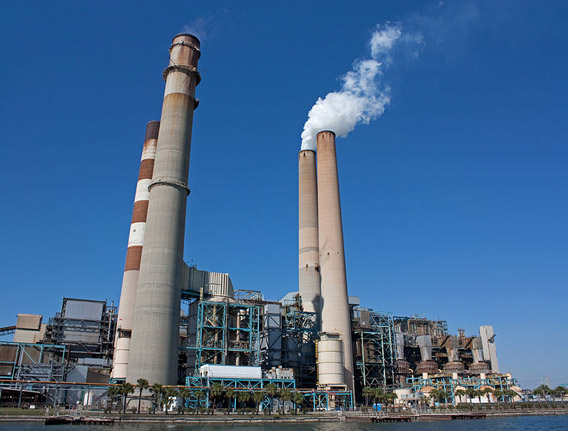Concentrations of carbon dioxide in the atmosphere have risen above 400 parts per million (ppm) in recording stations across the Arctic going as far south as Mongolia, reports the Associated Press. Such levels have not been seen in at least 800,000 years according to researchers. Carbon levels fluctuate depending on the region and the season and scientists say global concentrations will likely remain at around 395 ppm for the time being.
Crossing the 400 ppm threshold “[is] a reminder to everybody that we haven’t fixed this and we’re still in trouble,” Jim Butler, global monitoring director with the U.S.’s National Oceanic and Atmospheric Administration’s (NOAA) Earth System Research Lab, told the AP.
Prior to the Industrial Revolution, global carbon levels were stabilized at around 275-280 ppm. However, the burning of fossil fuels such as coal and gas, cement production, vast deforestation, industrialized agriculture, and other recent human impacts has resulted in carbon levels skyrocketing. Carbon can linger in the atmosphere for hundreds of years, before being sequestered into the oceans, depending on how much that ecosystem can hold.
Despite nations worldwide pledging to tackle climate change, carbon emissions continue to rise worldwide. According to the International Energy Agency (IEA), carbon dioxide emissions rose 3.2 percent to a new record of 31.6 gigatons in 2011.
Countries have pledged to keep global temperatures from rising beyond 2 degrees Celsius (3.6 degrees Fahrenheit), but scientists and experts warn that a lack of action is making this target increasingly unlikely. In fact, the IEA warns that the world is currently on track to hit 6 degrees Celsius (11 degrees Fahrenheit) by 2100, essentially leading to a climate catastrophe with temperatures rising further than they have been in 50 million years.
“The news today, that some stations have measured concentrations above 400 ppm in the atmosphere, is further evidence that the world’s political leaders—with a few honorable exceptions—are failing catastrophically to address the climate crisis,” former Vice President and a vocal proponent of climate action Al Gore wrote to the AP. “History will not understand or forgive them.”
Climate change has already been linked to rising sea levels, melting glaciers, wildlife disruptions, vanishing Arctic sea ice, and a rise in extreme weather, including droughts and floods.

Big Bend Coal Power Station in Apollo Beach, Florida in the U.S.
Related articles
Another record in global carbon emissions puts globe on track for ‘devastating consequences’

(05/29/2012) Last year global carbon dioxide emissions rose 3.2 percent to a new record of 31.6 gigatons, keeping the planet on track to suffer dangerous climate change, which could propel global crop failures, sea level rise, worsening extreme weather, and mass extinction. According to data from the International Energy Agency (IEA), China’s carbon emissions rose the most last year (9.3 percent) while emissions in Europe and the U.S. dipped slightly. China is the currently the world’s largest emitter of greenhouse gases, while the U.S. has emitted the most historically.
Seagrass beds store 20 billion tons of carbon

(05/22/2012) Just below the ocean’s surface lies a carbon powerhouse: seagrass meadows. New research in Nature Geoscience estimates that the world’s seagrass meadows conservatively store 19.9 billion metric tons of carbon, even though the threatened marine ecosystems make up only 0.2 percent of Earth’s surface. The findings lend support to the idea that seagrass protection and restoration could play a major role in mitigating climate change.
Featured video: why one scientist is getting arrested over climate change
(05/16/2012) In March 2012 the head of NASA’s Goddard Institute for Space Studies and well-known climatologist, James Hansen, spoke at a TED conference to explain what would push a 70-year-old scientist to participate in civil disobedience against mountaintop coal mining and the Keystone Pipeline, even leading to several arrests.














